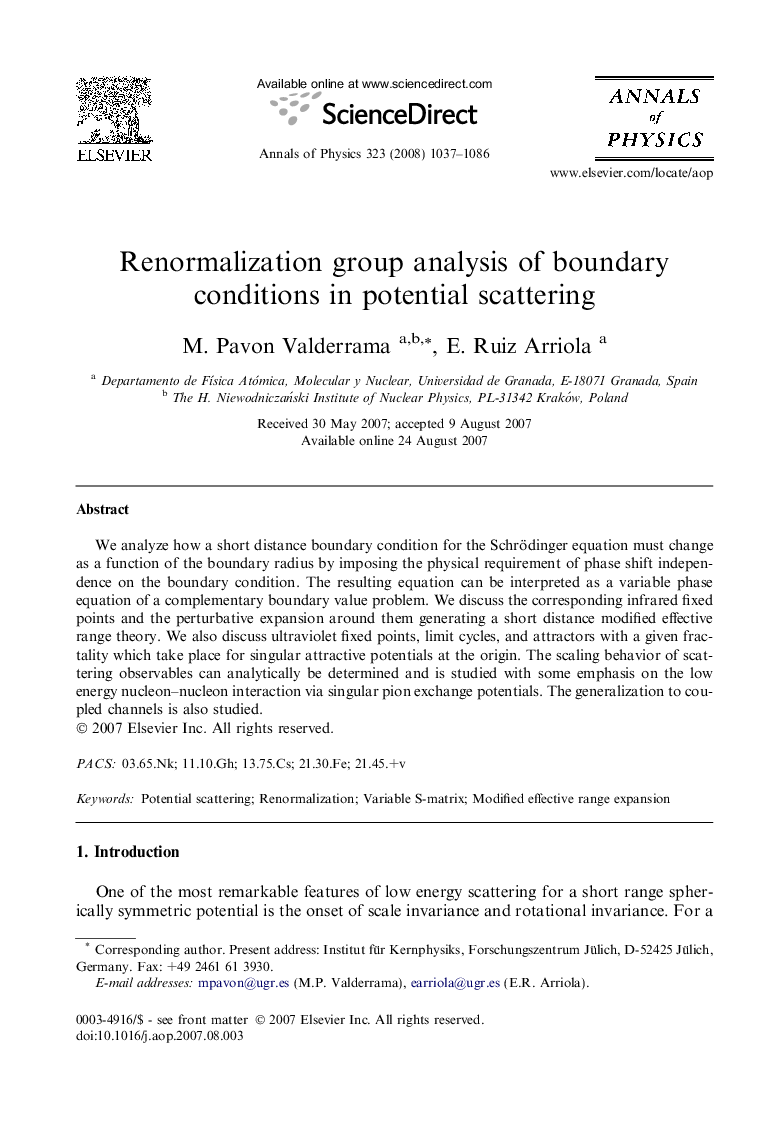| Article ID | Journal | Published Year | Pages | File Type |
|---|---|---|---|---|
| 1857720 | Annals of Physics | 2008 | 50 Pages |
We analyze how a short distance boundary condition for the Schrödinger equation must change as a function of the boundary radius by imposing the physical requirement of phase shift independence on the boundary condition. The resulting equation can be interpreted as a variable phase equation of a complementary boundary value problem. We discuss the corresponding infrared fixed points and the perturbative expansion around them generating a short distance modified effective range theory. We also discuss ultraviolet fixed points, limit cycles, and attractors with a given fractality which take place for singular attractive potentials at the origin. The scaling behavior of scattering observables can analytically be determined and is studied with some emphasis on the low energy nucleon–nucleon interaction via singular pion exchange potentials. The generalization to coupled channels is also studied.
